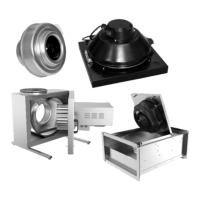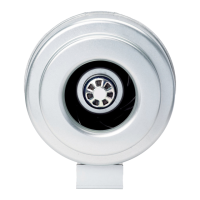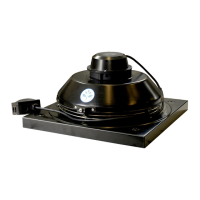systemair 47
3.7.3 Water cooling coil
Caution
See also section 3.1 General instructions and 3.7 Heating and cooling coils.
Be sure to install a properly sized siphon on the drain pipe to collect and drain the condensate.
Instructions for the construction, installation and connection are given in section 2.3.5 – Connection of
siphon.
Check before Commissioning
• Thetightnessofthethreadedjoints;tightenthemifrequired,
• the tightness of the piping joints.
Cooling coil anti-frost protection
Thecoolingcircuitislledwithwater:
• anti-frost protection relies on the anti-frost protection of the heating coil, which must be installed upstream of the
cooling coil, or
• anti-frost protection relies on full draining of the system before the cold (winter) season, during which the system is
to be shut down.
Thecoolingcircuitislledwithaglycol/watermixture:
• anti-frost protection relies on the correct concentration of the glycol/water mixture. When handling glycol, follow the
directions on the glycol safety data sheet.
Maintenance
In order to ensure smooth performance of the heat exchangers, the following operations should be carried out
regularly:
• Checkthatthewaterconnectionsareleakage-freeandthattheairjointsarermlymountedandleakage-free.
• Checktheventingfanoperation.Intheeventofdisturbancesinthemediumowthroughtheheatexchangeror
the formation of air cushions, vent the piping system.
• Checktheadequacyofthecoolingcoilanti-frostprotection.
• Regularlychecktheheatexchanger’sbladesfordustbuild-up.Dustorscalebuild-uponbladesreducestheheat
exchanger capacity. Clean the blades at regular time intervals – approx. every 500 hours of operation.
Tocleantheblades,blowthemwithcompressedairinthedirectionoppositetheairowdirection.
Ifsuchcleaningprovesinsufcient,disconnecttheheatingcoil,slideitout,andwashwithlow-pressurewaterorsteam.
Do not use high-pressure water or steam in order to avoid deforming the aluminium blades. If washing with water, the
pressure thereof must not exceed 15 bar and the jet must be directed strictly parallel to the blades. Exposure to a water
jet at an angle will damage the blades. This applies even more so to the blades at the edge, since these are even more
fragile.
Caution
Under no circumstances should you attempt to clean the blades with a hard object.
